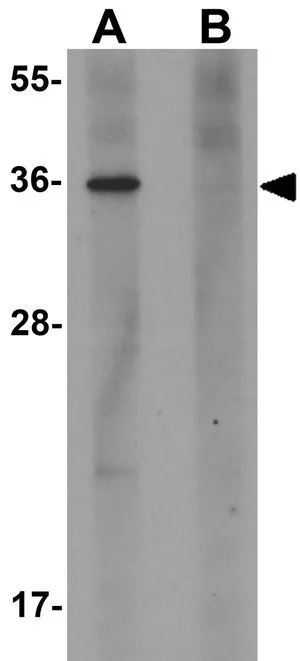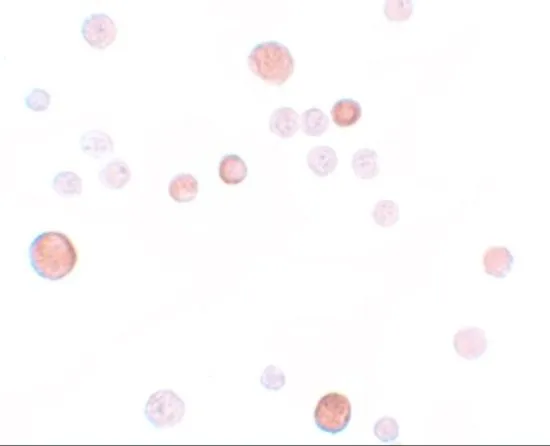
WB analysis of human placenta tissue lysate in (A) the absence and (B) the presence of blocking peptide using GTX85151 PLAC1 antibody. Working concentration : 1 microg/ml
PLAC1 antibody
GTX85151
ApplicationsImmunoFluorescence, Western Blot, ELISA, ImmunoCytoChemistry
Product group Antibodies
ReactivityHuman
TargetPLAC1
Overview
- SupplierGeneTex
- Product NamePLAC1 antibody
- Delivery Days Customer9
- Application Supplier NoteWB: 1 microg/mL. ICC/IF: 10 microg/mL. *Optimal dilutions/concentrations should be determined by the researcher.Not tested in other applications.
- ApplicationsImmunoFluorescence, Western Blot, ELISA, ImmunoCytoChemistry
- CertificationResearch Use Only
- ClonalityPolyclonal
- Concentration1 mg/ml
- ConjugateUnconjugated
- Gene ID10761
- Target namePLAC1
- Target descriptionplacenta enriched 1
- Target synonymscancer/testis antigen 92; CT92; OOSP2B; OOSP2L; placenta specific 1; placenta-specific protein 1
- HostRabbit
- IsotypeIgG
- Protein IDQ9HBJ0
- Protein NamePlacenta-specific protein 1
- Scientific DescriptionPLAC1 was initially identified as a protein expressed specifically in the placenta and other cells derived from the trophoblast lineage during embryonic development, but has also been found to be expressed ectopically in a wide range of human malignancies, particularly breast cancers. PLAC1 is a membrane-associated protein that is thought to serve a receptor-like function modulating cell-cell or ligand receptor interactions unique to the maternal-placental interface. Decreased expression of PLAC1 is associated with decreased expression of cyclin D1 and reduced expression of AKT kinase, which, combined with the fact that PLAC1 is expressed on the surface of cancer cells, suggests that PLAC1 may be an effective candidate for immunotherapeutic treatments of cancer.
- ReactivityHuman
- Storage Instruction-20°C or -80°C,2°C to 8°C
- UNSPSC12352203


